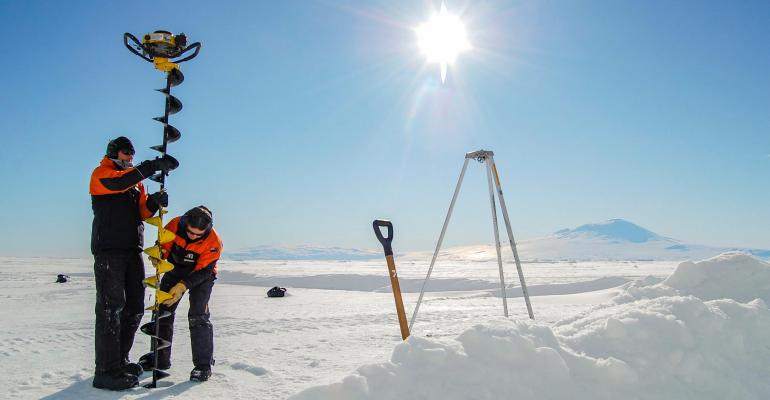- AUTHORAntarctica’s great apron of sea ice just issued the world with a bold message
- February 9 2017
Antarctica’s great apron of sea ice just issued the world with a bold message

As New Zealand’s Scott Base celebrates 60 years of science on ice, Veronika Meduna writes for The Spinoff looking at one of Antarctica’s most puzzling features – the wayward behaviour of sea ice around the continent. Her article features a Deep South Challenge researchers, and the work they are doing to understand the physics of the sea ice.
Every southern winter, Antarctica doubles in size. As the sun sets on the continent, the surface of the ocean around it freezes, kicking off the world’s most spectacular seasonal transformation. By spring, this apron of ice begins to break up again and by this time of the year, it largely retreats back to the coast.
For nearly four decades, as long as satellites have been watching these growth-collapse cycles from space, Antarctica’s sea ice has, on average, been growing further out from the continent, bucking the trend of vanishing sea ice seen in the Arctic and baffling scientists. Then, this season, everything changed.
During September and October 2016, in the hottest year on record globally and in New Zealand, both poles showed record low levels of sea ice, with millions of square kilometres of ice missing when compared with historic average values. Even in the Arctic, which has lost 40 per cent of sea ice since the 1980s and where this most recent development could be understood as an acceleration of an existing trend, the degree of sea ice loss is troubling scientists. In Antarctica, which saw a 4 per cent growth of sea ice up until 2014, this is exceptional.
…
To read the complete story visit Veronika’s article Antarctica’s great apron of sea ice at The Spinoff